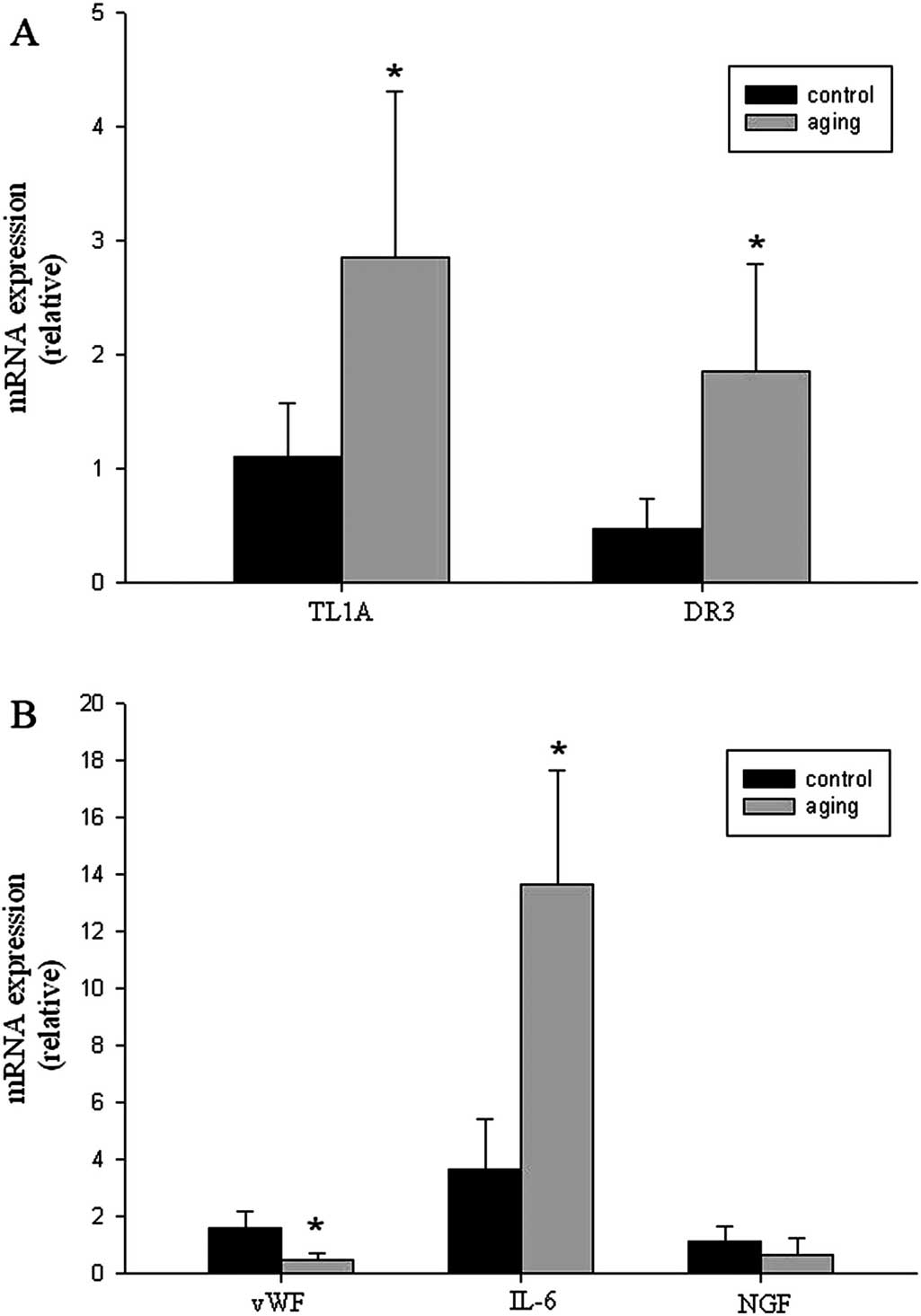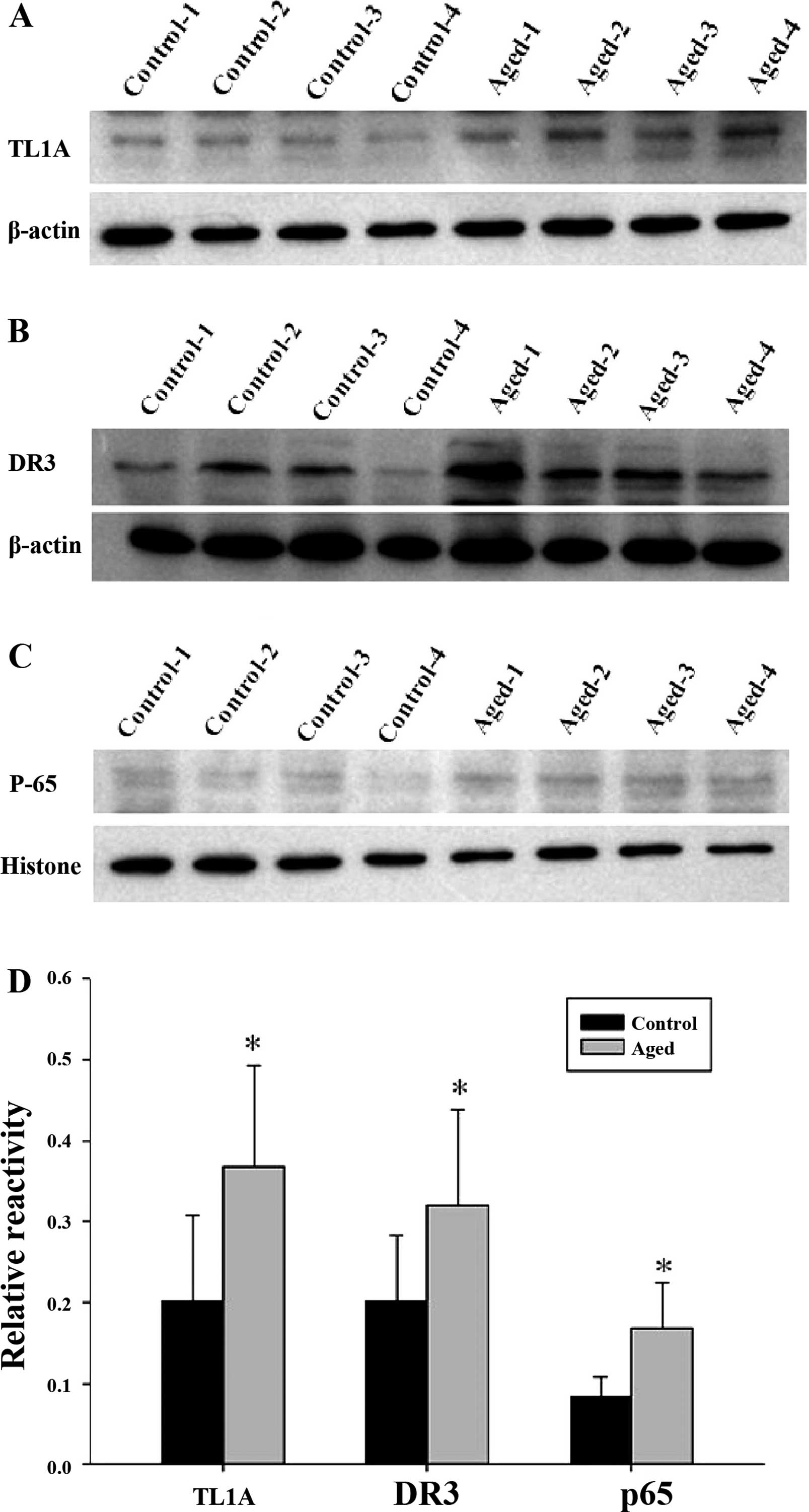|
1
|
Madersbacher S, Pycha A, Schatzl G, Mian
C, Klingler CH and Marberger M: The aging lower urinary tract: a
comparative urodynamic study of men and women. Urology. 51:206–212.
1998.
|
|
2
|
Taylor JA III and Kuchel GA: Detrusor
underactivity: clinical features and pathogenesis of an
underdiagnosed geriatric condition. J Am Geriatr Soc. 54:1920–1932.
2006.
|
|
3
|
Azadzoi KM, Tarcan T, Siroky MB and Krane
RJ: Atherosclerosis-induced chronic ischaemia causes bladder
fibrosis and non-compliance in the rabbit. J Urol. 161:1626–1635.
1999.
|
|
4
|
Azadzoi KM, Radisavljevic ZM, Golabek T,
Yalla SV and Siroky MB: Oxidative modification of mitochondrial
integrity and nerve fiber density in the ischaemic overactive
bladder. J Urol. 83:362–369. 2010.
|
|
5
|
Azadzoi KM, Tarcan T, Kozlowski R, Krane
RJ and Siroky MB: Overactivity and structural changes in the
chronically ischaemic bladder. J Urol. 162:1768–1778. 1999.
|
|
6
|
Azadzoi KM, Shinde VM, Tarcan T, Kozlowski
R and Siroky MB: Increased leukotriene and prostaglandin release,
and overactivity in the chronically ischaemic bladder. J Urol.
169:1885–1891. 2003.
|
|
7
|
Migone TS, Zhang J, Luo X, et al: TL1A is
a TNF-like ligand for DR3 and TR6/DcR3 and functions as a T cell
costimulator. Immunity. 16:479–492. 2002.
|
|
8
|
Kang YJ, Kim WJ, Bae HU, et al:
Involvement of TL1A and DR3 in induction of pro-inflammatory
cytokines and matrix metalloproteinase-9 in atherogenesis.
Cytokine. 29:229–235. 2005.
|
|
9
|
Zhai Y, Yu J, Iruela-Arispe L, et al:
Inhibition of angiogenesis and breast cancer xenograft tumour
growth by VEGI, a novel cytokine of the TNF superfamily. Int J
Cancer. 82:131–136. 1999.
|
|
10
|
Zhang N, Sanders AJ, Ye L, Kynaston HG and
Jiang WG: Expression of vascular endothelial growth inhibitor
(VEGI) in human urothelial cancer of the bladder and its effects on
the adhesion and migration of bladder cancer cells in vitro.
Anticancer Res. 30:87–95. 2010.
|
|
11
|
Al-Lamki RS, Wang J, Tolkovsky AM, et al:
TL1A both promotes and protects from renal inflammation and injury.
J Am Soc Nephrol. 19:953–960. 2008.
|
|
12
|
Takedatsu H, Michelsen KS, Wei B, et al:
TL1A (TNFSF15) regulates the development of chronic colitis by
modulating both T-helper 1 and T-helper 17 activation.
Gastroenterology. 135:552–567. 2008.
|
|
13
|
Bamias G, Martin C III, Marini M, et al:
Expression, localization, and functional activity of TL1A, a novel
Th1-polarizing cytokine in inflammatory bowel disease. J Immunol.
171:4868–4874. 2003.
|
|
14
|
Zhang J, Wang X, Fahmi H, et al: Role of
TL1A in the pathogenesis of rheumatoid arthritis. J Immunol.
183:5350–5357. 2009.
|
|
15
|
Abrams P, Blaivas JG, Stanton SL and
Andersen JT: The standardisation of terminology of lower urinary
tract function. The International Continence Society Committee on
Standardisation of Terminology. Scand J Urol Nephrol Suppl.
114:5–19. 1988.
|
|
16
|
Azadzoi KM, Yalla SV and Siroky MB:
Oxidative stress and neurodegeneration in the ischaemic overactive
bladder. J Urol. 178:710–715. 2007.
|
|
17
|
Poncelet C, Madelenat P, Feldmann G,
Walker F and Darai E: Expression of von Willebrand’s factor, CD34,
CD31, and vascular endothelial growth factor in uterine leiomyomas.
Fertil Steril. 78:581–586. 2002.
|
|
18
|
Jahroudi N and Lynch DC:
Endothelial-cell-specific regulation of von Willebrand factor gene
expression. Mol Cell Biol. 14:999–1008. 1994.
|
|
19
|
Tian F, Liang PH and Li LY: Inhibition of
endothelial progenitor cell differentiation by VEGI. Blood.
113:5352–5360. 2009.
|
|
20
|
Chew LJ, Pan H, Yu J, et al: A novel
secreted splice variant of vascular endothelial cell growth
inhibitor. FASEB J. 16:742–744. 2002.
|
|
21
|
Lachtermacher S, Esporcatte BL, Montalvao
F, et al: Cardiac gene expression and systemic cytokine profile are
complementary in a murine model of post-ischaemic heart failure.
Braz J Med Biol Res. 43:377–389. 2010.
|
|
22
|
Shih DQ, Kwan LY, Chavez V, et al:
Microbial induction of inflammatory bowel disease associated gene
TL1A (TNFSF15) in antigen presenting cells. Eur J Immunol.
39:3239–3250. 2009.
|
|
23
|
Gu Q, Yang XP, Bonde P, DiPaula A,
Fox-Talbot K and Becker LC: Inhibition of TNF-alpha reduces
myocardial injury and proinflammatory pathways following
ischaemia-reperfusion in the dog. J Cardiovasc Pharmacol.
48:320–328. 2006.
|
|
24
|
Phillips JI: Inflammatory plasma cell
infiltration of the urinary bladder in the aging C57BL/Icrfa(t)
mouse. Invest Urol. 19:75–78. 1981.
|
|
25
|
Wen L, Zhuang L, Luo X and Wei P:
TL1A-induced NF-kappaB activation and c-IAP2 production prevent
DR3-mediated apoptosis in TF-1 cells. J Biol Chem. 278:39251–39258.
2003.
|
|
26
|
Haferkamp A, Dorsam J, Resnick NM, Yalla
SV and Elbadawi A: Structural basis of neurogenic bladder
dysfunction. III Intrinsic detrusor innervation. J Urol.
169:555–562. 2003.
|
|
27
|
Karamoysoyli E, Burnand RC, Tomlinson DR
and Gardiner NJ: Neuritin mediates nerve growth factor-induced
axonal regeneration and is deficient in experimental diabetic
neuropathy. Diabetes. 57:181–189. 2008.
|
|
28
|
Yang JP, Liu HJ, Yang H and Feng PY:
Therapeutic time window for the neuroprotective effects of NGF when
administered after focal cerebral ischaemia. Neurol Sci.
32:433–441. 2011.
|
|
29
|
Lowe EM, Anand P, Terenghi G,
Williams-Chestnut RE, Sinicropi DV and Osborne JL: Increased nerve
growth factor levels in the urinary bladder of women with
idiopathic sensory urgency and interstitial cystitis. Br J Urol.
79:572–577. 1997.
|
|
30
|
Birder LA, Wolf-Johnston A, Griffiths D
and Resnick NM: Role of urothelial nerve growth factor in human
bladder function. Neurourol Urodyn. 26:405–409. 2007.
|











